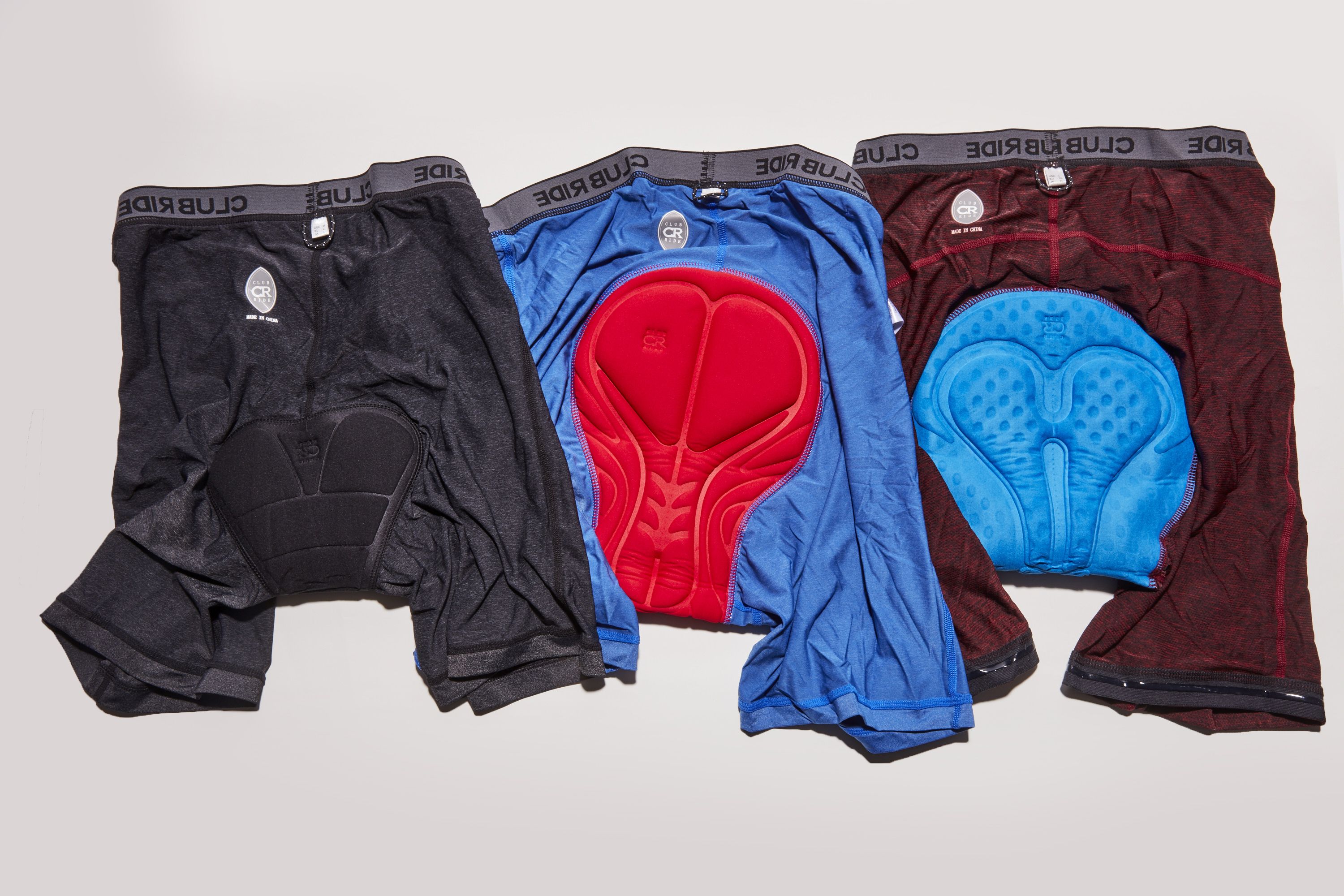7 Bike Shorts Mistakes That Can Ruin Your Ride
The right shorts can make or break your cycling... choose well, look after them properly and enjoy every ride.

1) Doubling Up Your Chamois
Double the chamois, double the comfort, right? Sadly, no.
“The new cyclist normally goes thicker, wider, softer, but… that’s not always the answer,” explains Paula Dyba, marketing vice president and creative director at Terry.
As you pedal, your sit bones sink into your saddle, settling on the sturdiest surface available so as to provide the most power to your pedal stroke. The more foam you add, the harder they’re going to press to find that power—ultimately leading to soreness.
If riding is still painful after a few weeks (it takes some time to ‘toughen up’ your butt, but it gets better quickly!), you might need to look into buying a new saddle that fits you better or investing in shorts with a differently shaped chamois.
2) Wearing Underwear Under Your Shorts
This is a common mistake that’s more than just a fashion faux pas. Wearing underwear with your bike chamois can create a lot of problems.
First, it blocks your nether regions from the chamois designed specifically to trap bacteria and fight friction against your bare skin. That creates a petri dish in your sweaty undies. Second, wearing underpants while riding inevitably leads to wedgies; these create friction and chafing that cause slight tears in the skin, which can then get infected or inflamed—the perfect storm for a dreaded saddle sore.
So chuck your panty-wearing notions out the window and embrace cycling’s commando aesthetic.
3) Washing Your Shorts Incorrectly
Your chamois should always be washed inside-out, so that it’s exposed to the maximum amount of water possible. How else are you supposed to wash away all that chamois cream, sweat, and other ‘stuff’ before your next ride? A sensitive skin detergent and the double-rinse cycle are also your friends if you’re prone to rashes after long or hot rides, since your harsh detergent might be to blame for those.
Most shorts also shouldn’t be thrown in the dryer (check the tag for specific laundering instructions), so make sure you hang them to dry somewhere with UV exposure in order to kill off lingering bad bacteria, suggests Steve Mathews, the inventor of Chamois Butt’r and head of Paceline Products.
Lastly, make sure your shorts are fully dry before you put them on again!
4) Wearing a Chamois Long Past Its Expiration Date
Like any piece of clothing, your bike shorts wear out eventually. If the foam in your chamois seems to be packed down so tightly that it feels like a heavy fabric, it’s time to replace your shorts. If the seams are unraveling, replace your shorts. If your elastic grippers are sagging off, replace your shorts. And if no amount of washing is making your chamois smell fresh and clean, you know the deal.
5) Using Petroleum-Based Anti-Chafing Cream
A lot of riders swear by petroleum jelly (or diaper rash ointments containing it) as cheaper versions of chamois cream, but that can actually be a costly mistake.
The petroleum jelly won’t wash out of your chamois properly, can trap bacteria in there, and can wreck the antimicrobial treatment, explains Mathews. It also wears out a chamois a lot faster—and it’s cheaper to buy chamois cream regularly than to need a new chamois regularly!
If that’s not enough to convert you, consider how much you cherish your saddle—petroleum-jelly damage is so bad that many leather saddle manufacturers won’t honour warrantees of saddles that come back with it.
6) Buying the Wrong Size Chamois
There isn’t an industry standard for bike short sizes—they can vary by brand, and even by cut and model year. So instead of assessing your shorts by size, go by feel.
Your shorts should fit tightly—not so much that they restrict your breathing, but also not so loose that the chamois moves under you. A chamois with too much wiggle room can create that dreaded friction, and loose seams in shorts can cause chafing.
You should be looking for shorts tight enough that you get a bit of compression, adds Dyba, plus a chamois that doesn’t feel like a diaper.
7) Misusing Chamois Cream
Cyclists often use too much chamois cream rather than too little, says Mathews. New cyclists often complain of a “water slide effect” from using too much chamois cream and wonder why it’s not helping fight friction—that’s because sliding around actually adds friction.
If you’re squishing in your shorts, consider cutting back. A quarter-size dollop is all you should need.
READ MORE ON: bib shorts bum cream chamois chamois cream Comfort cycling shorts shorts



